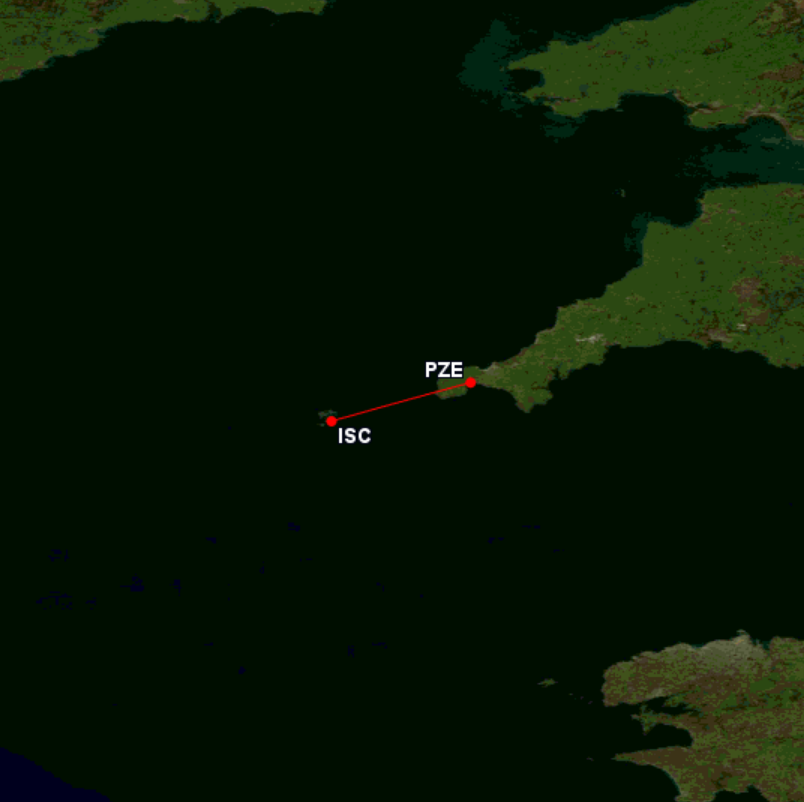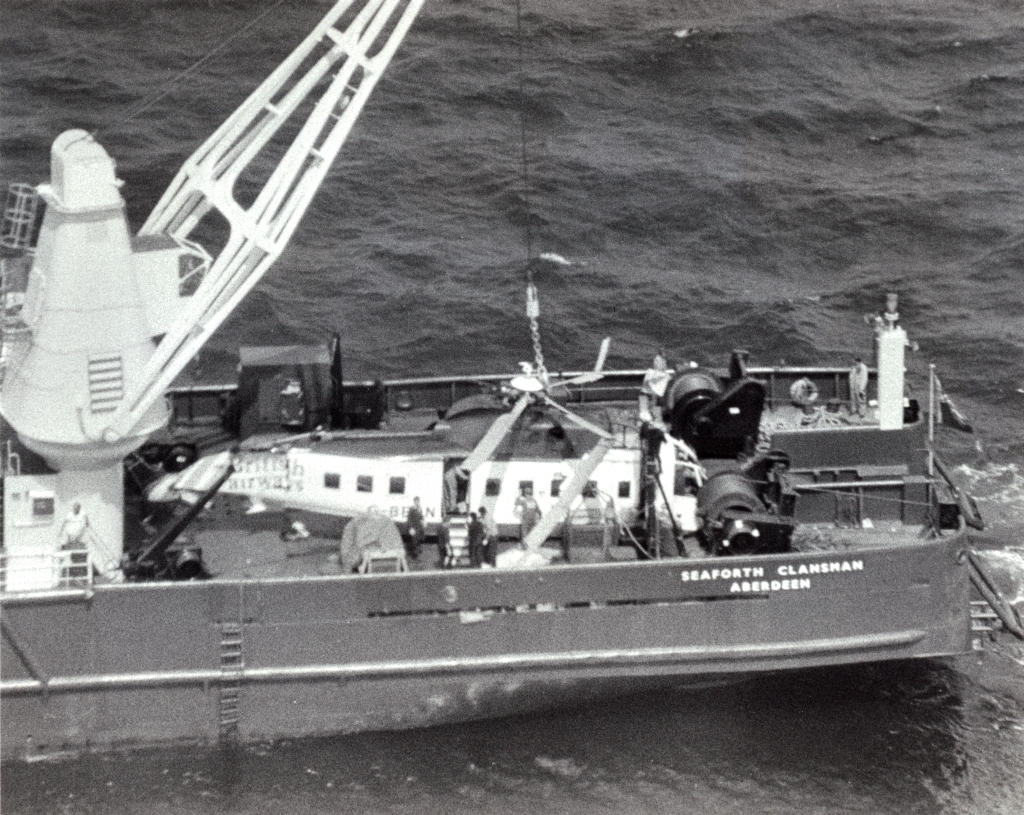
 16 July 1983: At 11:10 a.m., a British Airways Sikorsky S-61N-69 Sea King helicopter, c/n 61-770, registration G-BEON, departed Penzance Heliport (PZE) enroute across the Celtic Sea to St. Mary’s Airport, Isles of Scilly. On board were a crew of 3 and 23 passengers. Visibility was poor due to fog. Flying under visual flight rules, the helicopter was at 250 feet (76 meters) while the pilots tried to maintain visual contact with the surface of the calm sea.
16 July 1983: At 11:10 a.m., a British Airways Sikorsky S-61N-69 Sea King helicopter, c/n 61-770, registration G-BEON, departed Penzance Heliport (PZE) enroute across the Celtic Sea to St. Mary’s Airport, Isles of Scilly. On board were a crew of 3 and 23 passengers. Visibility was poor due to fog. Flying under visual flight rules, the helicopter was at 250 feet (76 meters) while the pilots tried to maintain visual contact with the surface of the calm sea.

Because of the limited visual cues, the crew did not recognize that they were in a slight descent. At approximately 11:35 a.m., the Sikorsky slammed into the ocean at cruise speed. It sank almost immediately. Only six persons survived, including the pilots, Dominic Lawlor and Neil Charleton. The helicopter sank to the sea bed 200 feet (61 meters) below. It was later recovered by the salvage vessel RMAS Seaforth Clansman, along with the bodies of 17 victims.

The official investigation determined that the cause of the accident was pilot error by their failure to recognize and correct the unintentional descent while attempting to fly in conditions not suitable for visual flight. This was the worst helicopter accident in terms of fatalities up to that time.
 The Sikorsky S-61N is a civil variant of the United States Navy HSS-2 Sea King. The first S-61N, s/n 61143, first flew 7 August 1962. It is a large twin-engine helicopter with a single main rotor/tail rotor configuration. The S-61N fuselage is 4 feet, 2 inches (1.270 meters) longer than that of the HSS-2. The S-61N is 72 feet, 7 inches (22.123 meters) long and 16 feet, 10 inches (5.131 meters) high, with rotors turning.
The Sikorsky S-61N is a civil variant of the United States Navy HSS-2 Sea King. The first S-61N, s/n 61143, first flew 7 August 1962. It is a large twin-engine helicopter with a single main rotor/tail rotor configuration. The S-61N fuselage is 4 feet, 2 inches (1.270 meters) longer than that of the HSS-2. The S-61N is 72 feet, 7 inches (22.123 meters) long and 16 feet, 10 inches (5.131 meters) high, with rotors turning.
The main rotor has five blades and a diameter of 62 feet (18.898 meters). Each blade has a chord of 1 foot, 6.25 inches (0.464 meters). The tail rotor also has five blades and a diameter of 10 feet, 4 inches (3.149 meters). They each have a chord of 7–11/32 inches (0.187 meters). At 100% r.p.m., the main rotor turns 203 r.p.m. and the tail rotor, 1,244 r.p.m. The main rotor turns counter-clockwise, as seen from above. (The advancing blade is on the helicopter’s right side.) The tail rotor turns clockwise, as seen from the left side. (The advancing blade is below.)
 G-BEON was powered by two General Electric CT58-140-1 turboshaft engines, each of which had maximum power rating of 1,400 shaft horsepower for takeoff and 1,500 SHP for 2½ minutes. The main transmission was rated for 2,300 horsepower, maximum.
G-BEON was powered by two General Electric CT58-140-1 turboshaft engines, each of which had maximum power rating of 1,400 shaft horsepower for takeoff and 1,500 SHP for 2½ minutes. The main transmission was rated for 2,300 horsepower, maximum.
The S-61 has a cruise speed of 166 miles per hour (267 kilometers per hour). The service ceiling is 12,500 feet (3,810 meters). The maximum takeoff weight is 20,500 pounds (9,298.6 kilograms).
Between 1958 and 1980, Sikorsky built 794 S-61 series helicopters. 123 were S-61Ns.
© 2018, Bryan R. Swopes